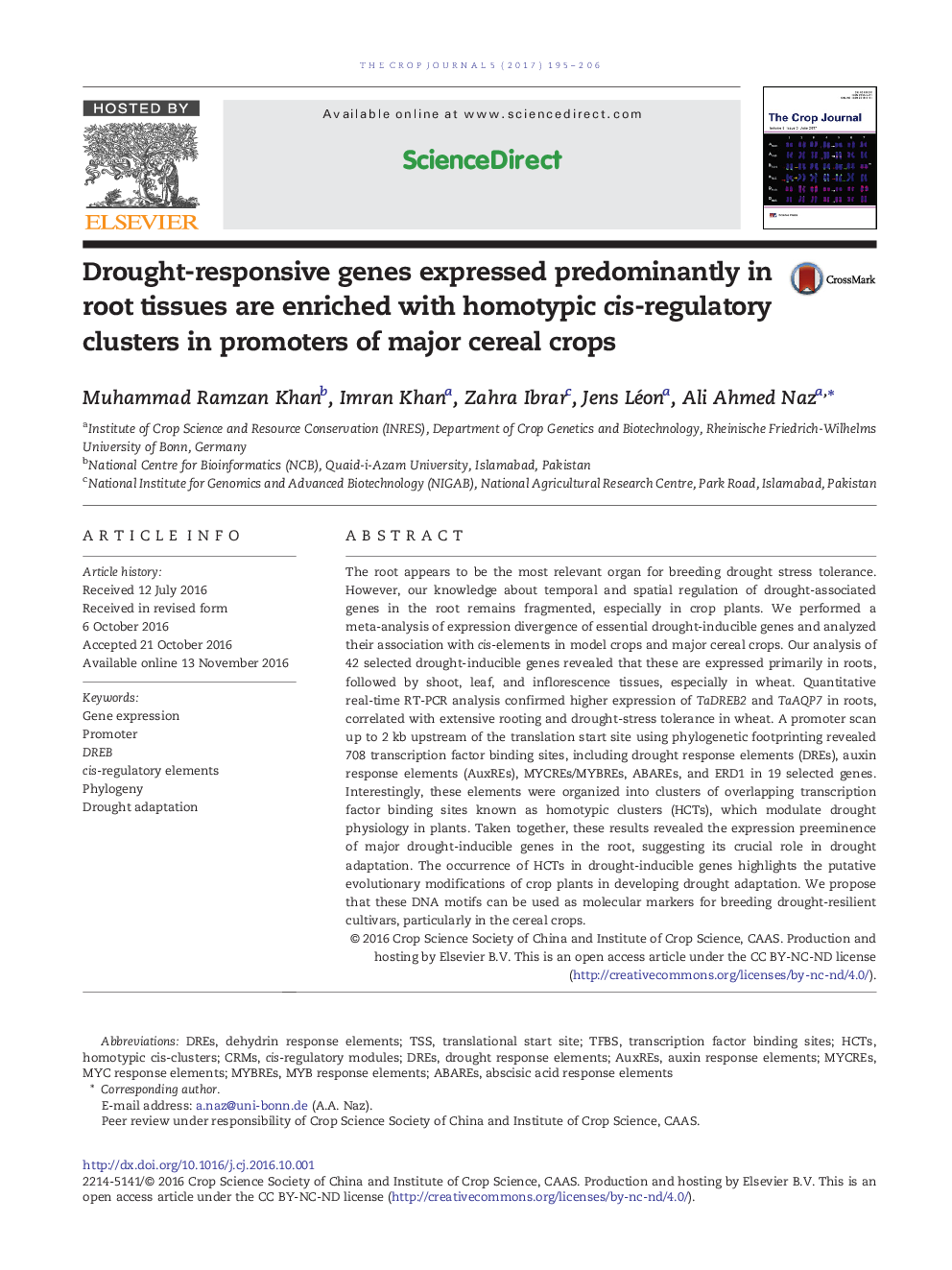| کد مقاله | کد نشریه | سال انتشار | مقاله انگلیسی | نسخه تمام متن |
|---|---|---|---|---|
| 5520777 | 1401227 | 2017 | 12 صفحه PDF | دانلود رایگان |

The root appears to be the most relevant organ for breeding drought stress tolerance. However, our knowledge about temporal and spatial regulation of drought-associated genes in the root remains fragmented, especially in crop plants. We performed a meta-analysis of expression divergence of essential drought-inducible genes and analyzed their association with cis-elements in model crops and major cereal crops. Our analysis of 42 selected drought-inducible genes revealed that these are expressed primarily in roots, followed by shoot, leaf, and inflorescence tissues, especially in wheat. Quantitative real-time RT-PCR analysis confirmed higher expression of TaDREB2 and TaAQP7 in roots, correlated with extensive rooting and drought-stress tolerance in wheat. A promoter scan up to 2Â kb upstream of the translation start site using phylogenetic footprinting revealed 708 transcription factor binding sites, including drought response elements (DREs), auxin response elements (AuxREs), MYCREs/MYBREs, ABAREs, and ERD1 in 19 selected genes. Interestingly, these elements were organized into clusters of overlapping transcription factor binding sites known as homotypic clusters (HCTs), which modulate drought physiology in plants. Taken together, these results revealed the expression preeminence of major drought-inducible genes in the root, suggesting its crucial role in drought adaptation. The occurrence of HCTs in drought-inducible genes highlights the putative evolutionary modifications of crop plants in developing drought adaptation. We propose that these DNA motifs can be used as molecular markers for breeding drought-resilient cultivars, particularly in the cereal crops.
Journal: The Crop Journal - Volume 5, Issue 3, June 2017, Pages 195-206